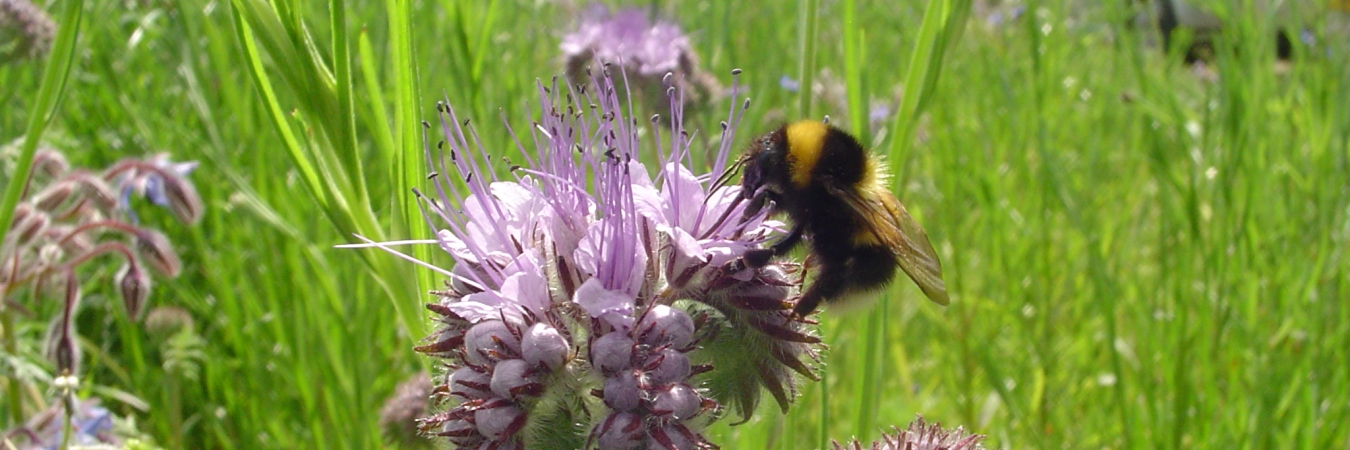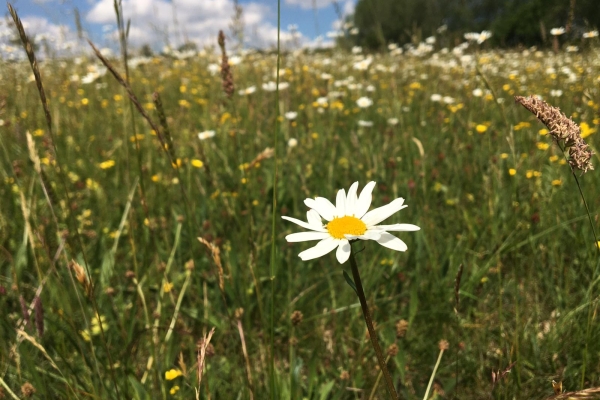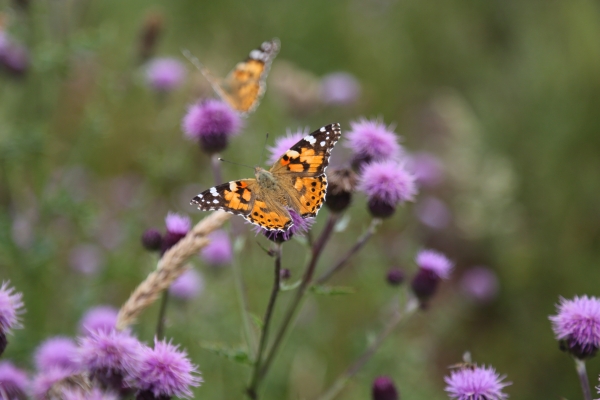Flower Power
Can ‘Flower Power’ really be of benefit on farm?
My own work at Stockbridge Technology Centre (STC), and that of several other UK research groups, has shown that flowering field margins can be used to promote pest control and production in field vegetable, cereal and fruit crops, whilst also delivering broader benefits to pollinators and meeting other conservation criteria (e.g. see HDC News, Feb 2015 and AHDB Factsheet 08/15).
But can this beneficial biodiversity pay its way? Our ‘ECOSTAC’ project – one of the last of those funded under the old Defra ‘HortLINK’ model, found that yield increases in cabbage, peas and cereals could be realised by utilising ‘multi-functional field margins’ with the capacity to deliver pest control as an ‘ecosystem service’. Four years’ worth of data collected at STC and in farmers fields supported that these increases resulted from reduced pest pressure, this being driven by increased natural enemy activity because of the field margin present. Coupled to the fact that features such as flowering margins are highly likely to be supported in post-Brexit agricultural stewardship, perhaps even more so than they are at present, and that encouraging natural pest control fits with the ‘Sustainable Use Directive’, and incentives for sowing that seed mix begin to stack-up.
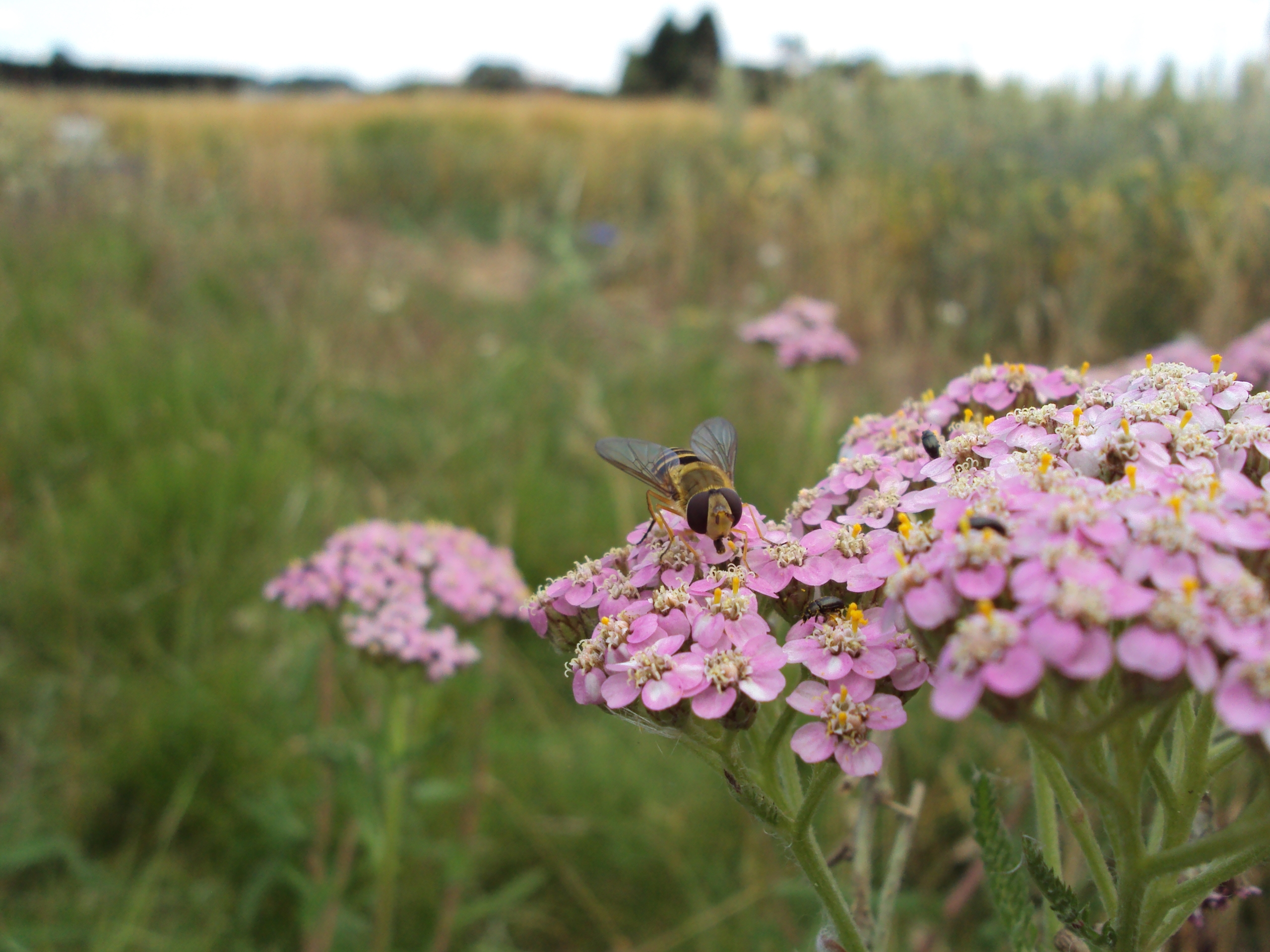
Hoverfly on yarrow – picture taken in one of STC’s ‘multifunctional field margins’, sown as part of the ECOSTAC project
Seed mixes and ‘good’ and ‘bad’ biodiversity
Not all seed mixes are created equal, however, and careful and considered formulation is needed to ensure that sown flower margins can deliver crop protection benefits. Pest natural enemies are often unable to utilise the same flowers as pollinators, for which many a margin seed mix is designed. Including plants that are likely to establish well, play nicely together in terms of competition, complement each other to provide an extended flowering season, and are unlikely to become a weed issue, are also important considerations to make the most of your ‘flower power’.
Also, not all biodiversity is beneficial, and care must be taken to ensure that margin mixes do not contain plants that would encourage pest insects. However, help is at hand to avoid a ‘double-edged sward’! Extensive databases have already been used to develop an online tool that suggests seed mixes based on rotations (and budgets), avoiding ‘high pest risk’ plant species (see AHDB project FV334a). Good seed suppliers should also be able to help here, and crop disease risk should be considered too. It’s all too easy to overlook the potential to promote ‘bad biodiversity’ when considering conservation-focused approaches on farm, though potential problems can usually be avoided with a little forethought and planning.
So, I’ve sown my ‘multi-functional margin’ – can I now sit back and relax whilst armies of natural enemies munch their way through my aphids? Not quite. Though ‘multi-functional’ field margins tick many boxes, including pest control, several groups have suggested that they may not increase overall numbers of beneficial insects on-farm, just concentrate them in certain areas. This is very likely to be true for those beneficials that require, for example, specific overwintering habitats such as wooded areas. That said, my own work has found a measly 2m wide margin to be well utilised by certain parasitoid wasps as a winter refuge. Perhaps more importantly, any border-based approach will be limited in the extent to which it can influence affairs in crop centres. Flowering margins are no exception, and the pest natural enemies they promote may be unlikely to disperse into the middle of fields, especially on large holdings.
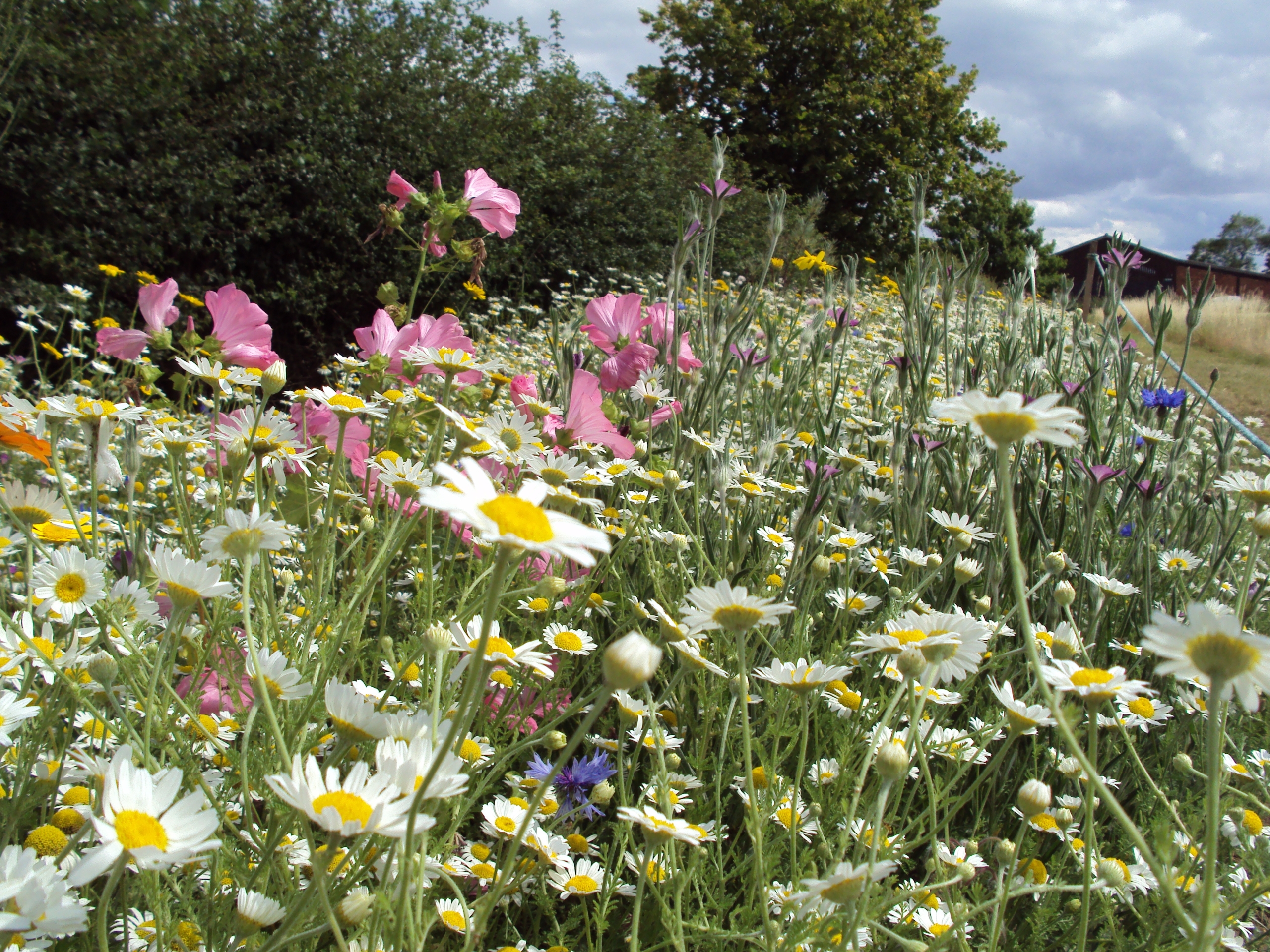
Flower margin at STC – This margin was designed to benefit pollinators, especially our resident honeybees, by providing abundant year-round nectar and pollen
Polycultures
Whilst we’ve trialled ‘floral corridors’ along wheelings and under-sown floral canopies to encourage natural enemy crop penetration in field veg, this proved incompatible with crop agronomy over the season at commercial sites, presenting difficulties for weed control. Nevertheless, this type of ‘polyculture’ is becoming ever more feasible through integration with precision agriculture approaches, with use of in-field floral resources at a range of scales being researched at several applied institutes across the UK (for examples look at the websites for the ASSIST, DIVERSify and TRUE projects).
Our own polycultural projects are focusing on GPS band-sowing cereals into strip-tilled clover corridors, where we’re hoping to maintain yields and reduce inputs whilst keeping at least 50% of the field under permanent non-crop cover. This wouldn’t necessarily be a ‘new’ look for arable fields though, rather a ‘back to the future’ approach. Polyculture per se would have been widespread in the UK before the advent of modern farming techniques, was practised in Mesoamerica more than 3,500 years ago, and is still relied upon heavily in many parts of the world to manage pests, weeds, disease, crop nutrition and soil health.
Biopesticides, trap crops and ‘floral islands’
If polyculture seems a step too far, then spraying the crop with available natural enemy attractants and supplementary food is another option to draw pest predators and parasitoids from flower margins into field centres, with such products already used under glass. Alternatively, spatially manipulating the pest population through margin-adjacent trap cropping could bring pest and natural enemy together – and is something we’ve trialled at STC using mustards in field brassicas.
With advances in remote imaging technology and precision agriculture, placing ‘floral islands’ within fields, rather than around them, is another exciting approach to increase predator and parasitoid crop penetration. In the future this could allow pest natural enemies to ‘island hop’ into field centres, utilising in-field areas where crops have underperformed to establish mixes that do well on poor soil, and could additionally function to restore soil health in the longer-term. The same approach could be used to optimally position multiple margins across the farm, connecting them to one-another as well as to additional habitat to serve as highways for beneficial bugs.
Benefits in a nutshell
Whilst some of the above uses for flowering seed mixes may be more easily implemented than others, they serve to highlight a few of the strongest plus-points of introducing flowers on farm – 1). Their potential to deliver multiple benefits to production and conservation, 2). The fact that they generally do best where crops do worst, and 3). Their strong compatibility with other pest management approaches. Though controversial, flowering margins can even be viewed as a suitable bedfellow for considered pesticide use, providing a refuge for beneficial insects during pesticide applications to the crop. With advances in precision spraying technology, and tractor/implement steer, the same can even be said for the clover strips that sit neatly in-between our strip-tilled ‘bands’ of cereals at STC!
Dr David George obtained his PhD, on companion planting and trap cropping, in 2007 from Newcastle University, having previously undertaken a MRes on intercropping jointly at Coventry and Warwick. He continued in academic research thereafter as a lead researcher/Research Fellow on projects to identify biopesticides and biological controls for use in veterinary pest management (Newcastle), and develop habitat-based approaches to encourage pest control and pollinator conservation in field vegetable and cereal crops (Lancaster). David joined STC in 2014 and now leads a multi-disciplinary team as Director of Science, overseeing work on both protected and field crops undertaken in STC’s Entomology, Pathology, Sustainability, Precision Agriculture and Novel Crop Production System Departments. David has published over 50 scientific papers and presented his work worldwide. He has been a Trustee and Vice President of the Royal Entomological Society, and currently serves as their Honorary Regional Secretary, and as a Fellow and Co-Editor of their members bulletin Antenna. David is a member of the Verral Association of Entomologists and the 2015 recipient of the Marsh Award for ‘Early Career Entomologist’. He is also a columnist for the Yorkshire Post and regular invited speaker at academic and industry events across the UK and Europe.
Editor’s note:
Access the AHDB factsheet 08/15 David mentions here:
Header image shows bee on phacelia. Carefully designed flower mixes can provide for both pollinators and pest natural enemies
All photo credits: Dave George
